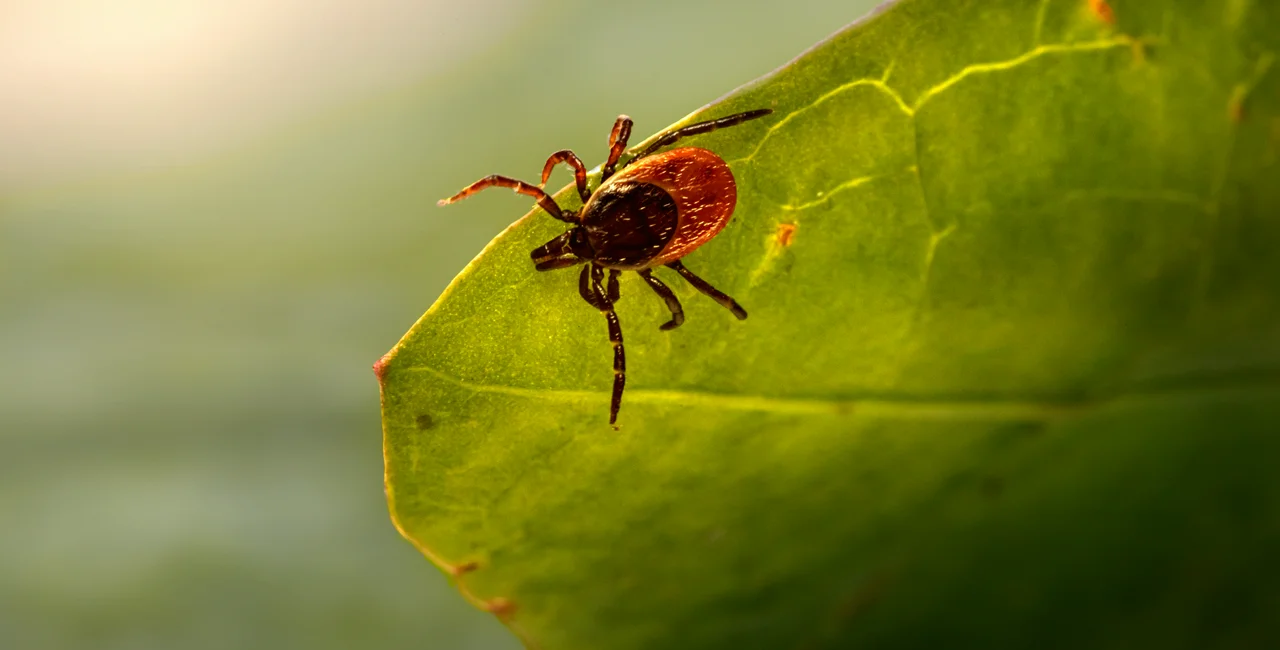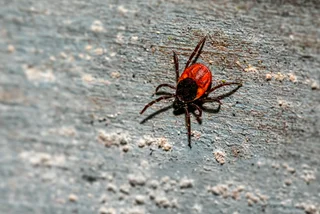Cases of tick-borne diseases are on the rise in Czechia, with double the number of patients with Lyme disease in some areas compared to last year. The risk of infection in city parks is also higher.
Current weather conditions have been ideal for ticks, which need a temperature above 10 degrees Celsius and significant humidity. The Czech Hydrometeorological Institute publishes a daily map of tick activity, with most of the country now listed as high risk (vysoké riziko) or extreme risk (mimořádné riziko) for the coming days.
South Bohemia has already seen 67 cases of Lyme disease this year, while for the same period a year ago there were 38 cases.
âš ï¸Pozor, klÃÅ¡Å¥ata jsou dnes na velké Äásti naÅ¡eho územà mimořádnÄ› aktivnÃ.
— ÄŒeský hydrometeorologický ústav (ÄŒHMÚ) (@CHMUCHMI) May 5, 2023
Ve dnech s takto vysokou aktivitou klÃÅ¡Å¥at se doporuÄuje chodit po zpevnÄ›ných cestách a dobrým pomocnÃkem je samozÅ™ejmÄ› repelent. pic.twitter.com/iRygFnzBln
An increase in Lyme disease can also be found in Central Bohemia with 60 cases so far compared to 41 in the same time last year. Lyme disease is caused by bacteria and can be treated with antibiotics in the early stages, but In the later stages, treatment is more difficult.
It is important to remove ticks quickly so that they do not have sufficient time to transmit the bacteria.
For tick-borne encephalitis (TBE) is about the same as last year, with two cases so far in the region. TBE, which is caused by a virus, requires hospitalization and can cause permanent consequences if it attacks the brain. There is a vaccine for this disease.
Last year the National Institute of Public Health (SZÚ) reported that from January to August there were 441 cases of TBE and 2,035 cases of Lyme disease. A year earlier, there were roughly 25 percent fewer patients with Lyme disease and 13 percent fewer patients with TBE.
Experts say that due to climate change, however, ticks are active for longer periods and therefore pose more danger to humans.
"Thanks to milder winters, more ticks survive, and in the spring they become more active earlier – for example, this year they woke up already in February," Kateřina Kybicová, head of the Lyme disease reference laboratory at the National Institute of Public Health, told news server Deník N.
"They also remain active longer into the late fall months. This prolongs the time when there is a risk of infection."
The Institute of Public Health collects ticks throughout Prague parks, and has found that about 25 percent of the ticks carry Lyme disease in the Czech capital. In forests monitored outside the cities and villages, the infection rate drops to around 10 percent, Kybicová said.
There are isolated areas with rates over 20 percent, but these are rare. The largest number of these are in South Bohemia and the Vysočina region. Scientists are unsure why ticks are more likely to carry disease in urban areas.












 Reading time: 2 minutes
Reading time: 2 minutes 




























